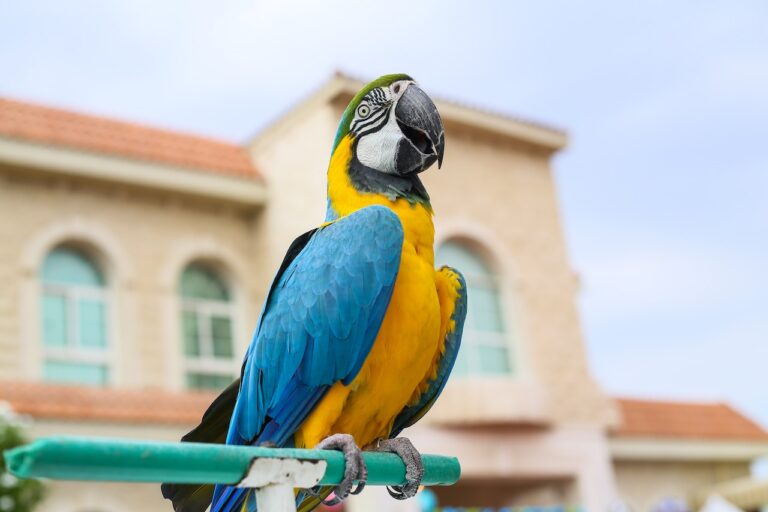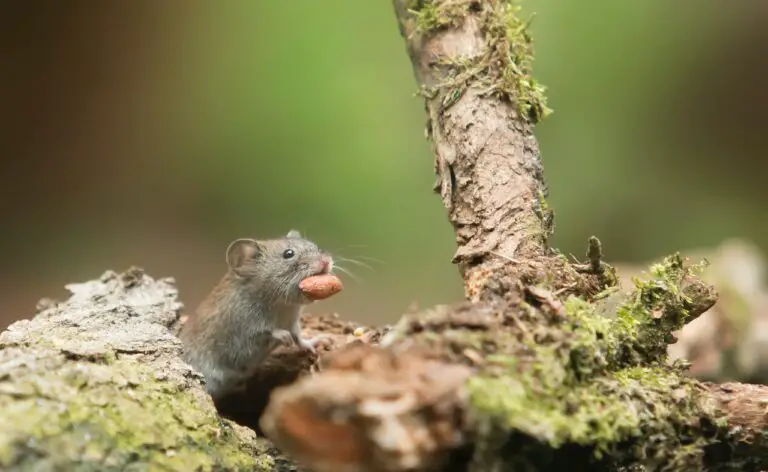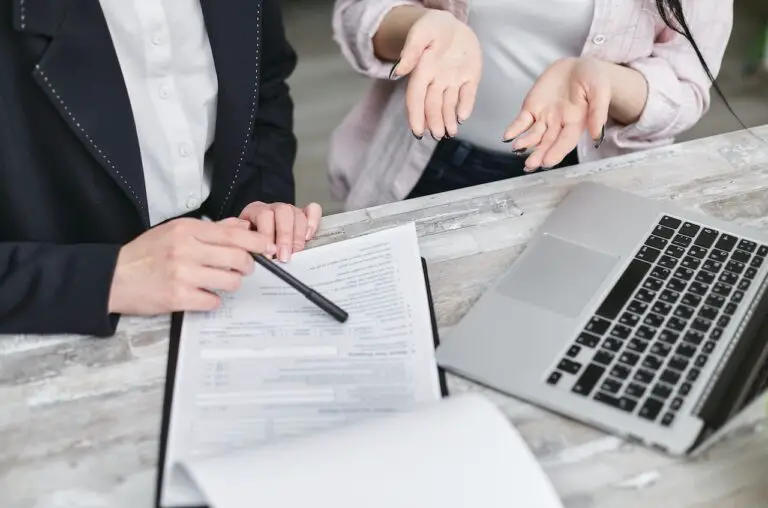Exploring the World of Exotic Reptile Pets: Lizards, Snakes & More
Keeping exotic reptiles as pets is becoming an increasingly popular hobby. Reptiles like lizards, snakes, turtles and tortoises can make fascinating pets for the right owner.
While reptile care does require some specialized knowledge, reptiles can thrive when properly cared for.
This article will provide an overview of some of the most popular exotic reptile pets, along with care tips, things to consider before getting a reptile, and more.
| Key Takeaways |
|---|
| Popular exotic reptile pets include lizards (geckos, bearded dragons, chameleons, iguanas), snakes (ball pythons, corn snakes, king snakes), and turtles/tortoises (red-eared sliders, Russian tortoises). |
| Lizards require specialized enclosures with proper lighting, heating, and humidity. Popular species like geckos, bearded dragons, and chameleons have specific dietary and housing needs. |
| Snakes make quiet, low maintenance pets. Popular species include ball pythons, corn snakes, and king/milk snakes which eat mice and require proper enclosures. |
| Turtles need large aquariums with water filtration. Tortoises require outdoor enclosures. Both need specialized commercial diets. |
| Good starter reptiles include leopard geckos, bearded dragons, ball pythons, corn snakes, and crested geckos due to easier care. |
| Proper housing, lighting, heating, substrate, hides, water, and climbing areas are critical for reptile health and enrichment. |
| Varied, nutrient-rich diets with supplements prevent deficiencies. Feed appropriate insects, vegetables, fruits, and rodents. |
| Daily handling and proper technique builds trust and tames reptiles. Enrichment like new objects and layouts prevents boredom. |
| Seek exotic vet care to address issues early. Do extensive research before getting any exotic reptile pet. |
Popular Types of Exotic Reptile Pets
Here are some of the most common exotic reptiles kept as pets:
- Lizards – Geckos, bearded dragons, chameleons, iguanas, monitors
- Snakes – Ball pythons, corn snakes, king snakes, milk snakes
- Turtles & Tortoises – Red-eared sliders, Russian tortoises, sulcata tortoises
Lizard Care
Lizards make very engaging pets.
Here are some care tips for popular lizard species:
- Geckos – Require an enclosure with proper heating and humidity. Crested geckos and leopard geckos are common pets. Eat insects.
- Bearded Dragons – Need large enclosures with basking area. Eat vegetables and insects. Require UVB lighting.
- Chameleons – Arboreal lizards that need screen enclosures. Need humidity and temperature gradients. Eat insects.
- Iguanas – Large lizards needing custom enclosures. Eat greens and vegetables. Require UVB lighting and heat.
Snake Care
Snakes have unique care needs but make quiet, low-maintenance pets. Popular species include:
- Ball Pythons – Small, docile snakes that eat mice. Require an enclosure with proper heating and humidity.
- Corn Snakes – Active, easy to care for snakes that eat mice. Need an enclosure with hides and climbing areas.
- King Snakes & Milk Snakes – Generally eat mice, very active snakes needing large enclosures.
Turtle & Tortoise Care
Turtles and tortoises each have specialized care requirements:
- Turtles – Need large aquariums or ponds. Omnivores eating commercial diets, vegetables, insects. Popular species include red-eared sliders.
- Tortoises – Require outdoor enclosures in warm climates. Eat greens, vegetables, some fruits. Popular pets include Russian and sulcata tortoises.
Things to Consider Before Getting a Reptile
Reptile care requires the following commitments:
- Proper housing – size, lighting, heating, humidity
- Healthy, varied diet – live insects, greens, vegetables, commercial diets
- Routine veterinary care from an exotic vet
- Handling and interaction to keep reptiles tame
- Potential lifespan of 10-20+ years
Reptiles are also not a good fit for every home. Things to consider:
- Housing large reptiles long-term
- Feeding schedules and costs
- Providing UVB lighting and heat
- Potential allergies to reptiles, substrates or feeders
- Local laws regarding exotic pet ownership
With proper research and preparation, reptiles can make very rewarding exotic pets! Do plenty of research on any species before deciding to get one.
Getting Started with Reptile Care
For beginners looking to get started, here are some great starter reptiles:
These species tend to have more straightforward care requirements compared to other exotic reptile species. They also tend to be calmer and make better handling pets.When selecting your first reptile pet, look for a captive bred juvenile from a reputable breeder. Many reptile rescues also adopt out wonderful starter reptiles. Avoid wild caught animals which tend to be less suited to life in captivity.
Providing Proper Housing
One key to success with reptile pets is setting up the proper housing:
- Size – Follow adult size guidelines, bigger is better
- Substrate – Reptile carpets, aspen, cypress mulch, etc.
- Hides – Provide a warm and cool hide area
- Climbing – Add branches, vines, ledges as needed
- Water – Bowls big enough to soak in
- Heat – Proper wattage bulb on a thermostat
- Light – UVB for diurnal reptiles
Custom building or buying reptile-specific enclosures is recommended over glass aquariums. Proper lighting and heating is also critical.
Reptile Nutrition
Feeding a balanced, varied diet is essential for reptile health:
- Insects – Crickets, worms, roaches, etc. for lizards/some snakes
- Rodents – Frozen/thawed mice or rats for snakes/some lizards
- Greens/Veggies – Dark leafy greens, veggies, limited fruits
- Supplements – Calcium and multivitamin powders
- Commercial diets – Pellets, canned food for supplemental feeding
Variety, gut loading feeders, and dusting food with supplements prevents nutritional deficiencies. Always research specific species’ dietary needs.
Reptile Handling and Taming
With regular, gentle handling, many species of reptiles can become quite tame:
- Start handling young or captive bred reptiles
- Begin handling for short periods to build trust
- Support the whole body properly when handling
- Move slowly and avoid sudden movements
- Handle daily for 10-15 minutes for taming
- Wash hands before and after handling
Proper handling techniques help prevent stressing reptiles as you build a bond.
Reptile Enrichment
Providing an enriching habitat helps reptiles thrive. Ideas include:
- Climbing branches, live or silk plants
- Hammocks, tunnels, tubes, hides
- Natural substrates for burrowing
- Puzzle feeders, scattered feedings
- Soaking tubs, misting for shedding
Rotating new objects and enclosure layouts provides mental stimulation. Targeted interactions like handling and training sessions are also enriching.
Reptile Health and Veterinary Care
Common health issues to watch for include:
- Respiratory infections – Wheezing, mucus, keeping mouth open
- Parasites – Loss of appetite, weight loss, abnormal stools
- Shedding issues – Retained eye caps, unshed skin
- Mouth rot – Cheesy deposits in the mouth
Seeking vet care from an experienced exotic animal vet is recommended. Wellness exams, fecal tests, and addressing issues early improves outcomes.
Why Keep Reptiles as Pets?
What draws people to choose reptiles as pets?
- Fascinating behaviors and diversity of species
- Lower maintenance needs compared to mammals
- Long lifespans allow forming long bonds
- Interacting with these ancient, successful animals
- Easier care than high energy pets like dogs
- Teaching kids responsibility and caretaking skills
What are your motivations for being interested in reptile pets? Do your research, provide excellent care, and enjoy these captivating creatures!
Selecting Your Reptile
Choosing the right reptile pet is crucial for success. Be sure to:
- Thoroughly research any species you are considering to make sure you can meet its needs long-term. Factor in adult size, lifespan, temperament, and care requirements.
- Check your local and state laws. Many places have restrictions on owning exotic pets like reptiles. Make sure the species is legal to own in your area.
- Only obtain reptiles from reputable breeders or rescues/shelters, not pet stores. This ensures you get a healthy animal with a known history.
- Quarantine new reptiles for 30-60 days before introducing them to other pets. Watch for signs of illness and treat any issues before mixing them with established pets.
Taking the time to carefully select the right reptile pet will get your new companion off to a great start!
Creating a Naturalistic Habitat
Re-creating aspects of a reptile’s natural habitat helps it thrive. Key elements include:
- Use appropriate substrate like reptile carpet, cypress mulch, or coconut fiber. Avoid sand or small particulates that can cause impaction if ingested.
- Add live or artificial plants, vines, branches, and cork logs to provide hiding spots, climbing, and enrichment.
- Create proper temperature gradients with basking spots under heat lamps. Use under tank heating pads regulated by a thermostat for ambient heat.
- Provide hiding caves and tunnels on both the warm and cool ends of the habitat. These allow the reptile to self-regulate its temperature.
- Include climbing branches, shelves, and hammocks for arboreal species.
Closely mimicking their wild habitats reduces stress and promotes natural behaviors.
Common Health Problems
Being aware of potential health issues helps catch them early:
- Metabolic bone disease from lack of UVB light and calcium causes deformities and fractures.
- Poor shedding leads to skin infections. Increase humidity and provide soaking tubs.
- Burns result from unregulated heat sources. Use ceramic heat emitters and thermostats.
- Gastrointestinal issues arise from abrupt diet changes. Transition food slowly.
- Egg binding can occur in female reptiles, requiring immediate vet assistance.
- Low temperatures cause dangerous respiratory infections. Provide proper heat gradients.
Routine vet checkups, balanced diets, and careful monitoring prevents many problems.
Bonding with Your Reptile
Reptiles often require work to become comfortable being handled:
- Start handling at a young age and keep handling sessions brief but frequent.
- Always support the reptile’s entire body and move slowly to avoid startling it.
- Limit handling time to avoid undue stress. Watch for signs of discomfort like hissing or puffing up.
- Hand-feed preferred treats during handling to build positive associations.
- Be patient and persistent. Gaining a reptile’s trust takes time and consistency.
Bonding with reptiles is very rewarding. With proper technique and patience, many species can become quite tame companions.
Conclusion
- Reptiles like lizards, snakes, turtles, and tortoises make fascinating exotic pets for the right owner. Their behaviors and diversity of species is captivating.
- With proper research and preparation, many reptile species can thrive in captivity. Providing appropriate housing, lighting, heating, diet, and enrichment is key.
- Good starter reptile pets for beginners include leopard geckos, bearded dragons, ball pythons, corn snakes, and crested geckos due to easier care requirements.
- Bonding with reptiles requires patience, gentle handling techniques, and persistence. Their long lifespans allow for forming long-term bonds.
- Always research any new exotic pet thoroughly, and make sure you can provide for all of its needs over its entire lifespan before deciding to get one.
- Reptile ownership can be very rewarding with the right expectations, preparations, and commitment to excellent care.
Frequently Asked Questions
What are some good starter reptiles for beginners?
Some good starter reptile pets include leopard geckos, bearded dragons, ball pythons, corn snakes, and crested geckos. These species tend to have more straightforward care requirements and calmer dispositions.
How large of an enclosure does my reptile need?
The enclosure size should be based on the adult size of the reptile’s species. Always provide an enclosure as large as possible – bigger is better. Refer to specific housing guidelines for the species you are interested in.
What type of lighting does my reptile need?
Diurnal lizard species like bearded dragons require full spectrum UVB lighting for proper calcium metabolism. Nocturnal geckos and snakes do not require special lighting. Some species like chameleons need both UVB and basking lights. Always research lighting needs.
What temperature range should I provide?
Reptiles need a proper temperature gradient with a basking area at one end about 90-95 F and a cooler area around 75-80 F. Use under tank heating pads, ceramic heat emitters, and incandescent bulbs to create this gradient.
How often do I need to feed my reptile?
Feeding frequency depends on the species, size, and age of the reptile. Hatchlings need daily feeding, juveniles every other day, and adults 2-3 times per week in most cases. Follow specific guidelines for your pet’s needs.
What vegetables and fruits can I feed my reptile?
Good options include leafy greens like kale, collard, and mustard greens, vegetables like bell peppers and squash, and limited fruits like berries and melons. Avoid iceberg lettuce. Research your specific pet’s dietary needs.
Is handling my reptile safe?
With proper hand washing and support of the reptile’s whole body, gentle handling should not harm the reptile. Limit sessions to 10-15 minutes max to avoid stress. Taming takes patience, persistence and regular handling.
Peter Stones is the founder of Exotic Pets Place, the leading online resource for exotic pet care information.
With over 10 years of hands-on exotic pet ownership experience, he is deeply passionate about sharing his expertise to help others properly care for their unusual pets.
When he's not writing extensively researched articles or connecting with fellow exotic pet enthusiasts worldwide, you can find Peter at home tending to his own beloved menagerie of exotic animals.







